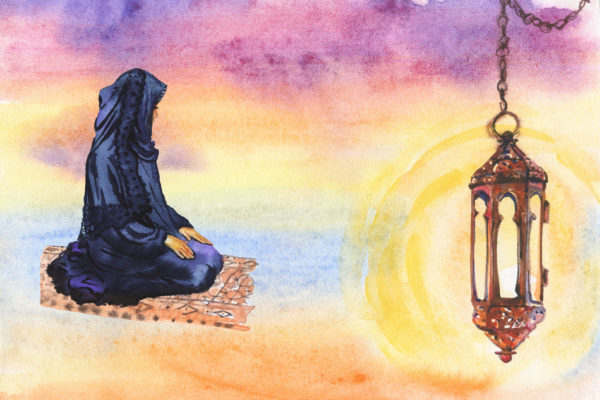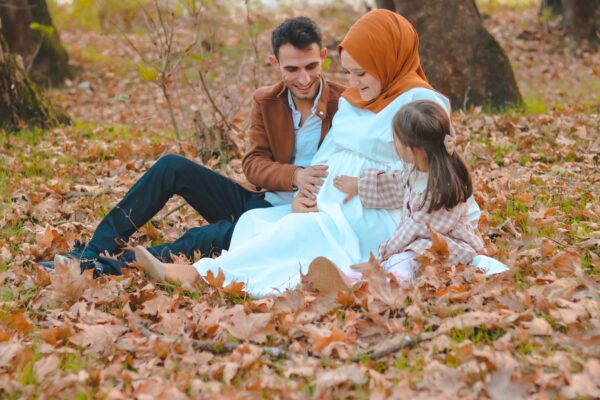Black Muslim women still face anti-Black gendered Islamophobia when interacting with the police, including having their khimars removed when they are arrested and having their mugshot taken while their heads are uncovered. She explains that this sometimes happens because Black Muslim women’s khimar styles (buns, turbans) are not “read” as Muslim; police officers and correctional officials wrongly assume that Black Muslim women are covering their heads for fashion, rather than religion.
Black Muslim women still face anti-Black gendered Islamophobia when interacting with the police, including having their khimars removed when they are arrested and having their mugshot taken while their heads are uncovered. She explains that this sometimes happens because Black Muslim women’s khimar styles (buns, turbans) are not “read” as Muslim; police officers and correctional officials wrongly assume that Black Muslim women are covering their heads for fashion, rather than religion.
In recent years, Islamic Studies scholars and scholars who study Muslims have begun to use critical race theory – which was introduced by legal scholars to explain how white supremacy persisted despite the end of de jure segregation – to analyze the history of anti-Muslim sentiment in the United States. One of the most common ways Islamic Studies scholars have engaged with critical race theory is through examining the racialization of Muslims. Omi and Winant define racialization as “the extension of racial meaning to a previously racially unclassified relationship, social practice, or group.”1
When a group is racialized, the physical characteristics of group members are used to determine group behavior. Critical race theory has allowed scholars to provide new insights into the experiences of Muslims – and people who are “read” as Muslims such as Sikhs – whose outward characteristics — beards, head coverings, skin color — as well as less visible features, like accents and names are problematized in this racialized framework. Arab, Asian, and white Muslims have been privileged in this research. These include Saher Selod’s book, Racialized Surveillance of Muslim Americans in the War on Terror, and Amaney Jamal and Nadine Naber’s edited volume, Race and Arab Americans Before and After 9/11 From Invisible Citizens to Visible Subjects. Simran Jeet Singh has written extensively on how the racialization of Islam affects Sikhs, particularly men who wear turbans.
Race, while socially constructed, has social and material consequences. Understanding how racialization works allows scholars to explain how Arab Americans, who had previously been classified by the U.S. government as “white” and been able to operate as “invisible minorities” became hyper-visible and lose their racial status post-9/11. As journalist and scholar Moustafa Bayoumi notes, citizenship in the United States was originally limited to white people. Between 1790 and 1952, laws — the fourteenth amendment and the Nationality Act of 1940 — slowly expanded to include Black people and Native Americans as eligible for American citizenship.2
Before 1952, the only option for immigrant Arabs and Asians who wanted to acquire citizenship in the United States was to identify as either Black or white. Because the United States was founded on anti-Blackness, most Arab immigrants who sought U.S. citizenship did so by identifying as white. One way to show that they were white was to de-emphasize their Muslim-ness, which the court systems often viewed as incompatible with the United States.
For instance, Moustafa Bayoumi details a decision made by Judge Arthur J. Tuttle in 1942 in which Ahmed Hassan, a Muslim immigrant from Yemen, petitioned for naturalization. Judge Tuttle denied the petition and stated in his decision that not only were Arabs non-white, people from the “Mohammedan world” had drastically different cultures from European Christians and could not be expected to intermarry or assimilate into American society. Because of this interlocking racism and Islamophobia, many of the first Arabs granted citizenship were Christians, especially from Syria and Lebanon. As Junaid Rana explains, religion has been used to classify non-Christians as second-class citizens, dating back to at least the Spanish Inquisition.3
In the U.S. before 1952, Arab Muslims often conducted religious practices in private and devoted their attention to building cultural centers, rather than mosques, to prevent drawing attention to their Other-ness. Many Anglicized their Arabic names; Ibrahim became Abe, Muhammed became Mo. After 9/11, however, Arabs were cast as a potential violent threat to national security and perpetually foreign. Their white status was revoked, and their Americanness became contingent on performing proper patriotism and distancing themselves from “bad Muslims.”
Covered Muslim women face the brunt of interpersonal anti-Muslim violence because the khimar (hijab/headscarf) is the most visible symbol of Islam. It serves as a visual reminder of Muslims’ Otherness. In her book, Arabs and Muslims in the Media, Evelyn Alsultany explores the ways in which the media sought to counter growing post-9/11 anti-Muslim sentiment by portraying Muslims in a “positive” light, as regular, patriotic Americans. She argues that by sympathetically portraying the Muslim Other, the United States can position itself as morally superior, giving the illusion of a multicultural utopia. In constructing “good Muslims” who can be redeemed and assimilated into American society, “bad Muslims” who pose a threat to this multicultural utopia must also exist in order to fulfill the imagined dichotomy. At the heart of the “bad Muslim trope” is the idea of Muslim Otherness; attempting to transcend this otherness often means embracing white middle-class norms.
For Black people, who are positioned at the bottom of the racial hierarchy in the United States, their ability to access whiteness is limited. Black Muslims face both anti-Muslim sentiment and anti-Blackness. As such, Black Muslim women are rarely recast as “good Muslims.”
The desire to move past the Black/white binary in conversations around race to include non-Black people of color has been growing since the 1965 Immigration Reform Act, which ended the racist immigration quota system and allowed for increased immigration from non-European countries. In doing so, scholarship that uses critical race theory to study Muslims has contributed to the marginalization of Black Muslims. It ignores the fact that there are Black Arabs, Black Asians, and Black immigrants who often have different relationships to Blackness than Black Americans, Afro-Caribbeans, and Afro-Latinx people due to different colonial histories. It also ignores the fact that Islamophobia in the U.S. began well before 9/11.
It is not my argument that critical race theory has hurt Black Muslims. Hakeem Muhammad reminds us that Black Muslims have borrowed from and been influenced by critical race theory. Critical race theory has provided names to practices and perspectives that Black people have been engaged in and with, such as intersectionality, which I discuss later and it has helped people understand that racism extends beyond interpersonal relationships. Rather, I argue, many scholars’ use of critical race theory has unintentionally de-centered Black Muslims in discussions of Islamophobia. By doing so, these scholars not only contribute to the erasure of Black Muslims, they also obscure the long history of anti-Muslim sentiment in the United States, which limits scholars and activists to organize and collaborate to build a future beyond Islamophobia.
Viewing Islam and Muslims as anti-American and a threat to domestic security is not a new phenomenon; it dates to the Transatlantic Slave Trade. Approximately 10 percent of enslaved Africans brought to the United States were Muslim, with an even larger percentage being shipped to the Caribbean and South America. Many of the enslaved African Muslims trafficked to the Americas were skilled in combat. As such, they often led or participated in violent revolts against their captors. In fact, the first documented insurrection against enslavers was led by twenty enslaved African Muslims on December 25, 1522 on Hispaniola (today, divided into the Dominican Republic and Haiti).4 In response, the king of Spain, Charles V banned the transportation of enslaved Muslims to the Americas in fear that they would continue to violently resist.
More recently, the fear of a Muslim threat to national security reappeared in the 1920s, when Black Muslim organizations, most notably, the Nation of Islam, were surveilled by the federal government. They were viewed as fanatical, anti-white, anti-American, and not a legitimate religion.5 Concerns of Black Muslim violence were heightened during WWII, as part of J. Edgar Hoover’s RACON program, which sought to identify disloyal Black Americans.6 Some members in the Nation of Islam sought to create transnational ties with Japan. They saw the country as a global superpower that had the potential to disrupt white supremacy. The media also participated in constructing Black Muslims as a national security threat, most notably in the 1959 television documentary, The Hate that Hate Produced, which introduced white America to Elijah Muhammad, Malcolm X, and Louis Farrakhan. In five hours, journalists Mike Wallace and Louis Lomax were more successful in convincing the American public that the NOI was a dangerous and illegitimate religion that needed to be stopped than the FBI had been in nearly twenty years of surveillance, harassment, imprisonment, and spreading of fabricated information under RACON.
Ignoring the ways in which many of the U.S. government’s anti-Muslim policies were first created to oppress Black Muslims prevents Muslim activists and scholars from seeing how the U.S. is inherently Islamophobic. As Margari Aziza Hill, co-founder of the Muslim Anti-Racist Coalition, states, “The erasure of Black American Muslims undermines efforts towards developing a unified front in the face of our greatest threat.”7
Black Muslim Women Matter
Feminist scholar Moya Bailey (2008) introduced the term “misogynoir” to describe the unique oppression Black women face because they are Black women. 8 Womanist thinker Trudy further theorized the concept of misogynoir, showing how interlocking anti-Black and sexist images of Black women can be internalized by Black people.9 For Bailey and Trudy, misogynoir is inclusive to all Black women regardless of ethnicity, sexuality, or religion. Yet, the experiences of Black Muslim women deserve individual attention.
The erasure and marginalization of Black Muslim women happen despite there being well-documented evidence of the ways in which Black Muslim women, especially those who cover, endure oppression that is a result of their three (or more) interlocking identities. Discussions around gendered Islamophobia and responses to it typically ignore the unique ways in which Black Muslim women are policed, surveilled, and discriminated against at both the interpersonal and structural level.
Black Muslim women in the United States not only have to endure gendered Islamophobia, they are also forced to navigate what Patricia Hill-Collins calls the controlling images of Black womanhood: the Jezebel, the Mammy, and the Sapphire. All three images were introduced in the mid-nineteenth century to justify the oppression of Black women. The Jezebel is described as a hypersexual maneater and was created to justify the sexual violence Black women endured by non-white men. The Mammy, in contrast to the Jezebel, is a de-sexualized caretaker who neglected her own family to care for white families, especially white children. In the media, Mammies are often depicted as older fat dark-skinned women who willingly accept their subordinate position. The last controlling image, the Sapphire, is loud, masculine, and violent. The Sapphire is so overbearing that she emasculates her male partner. These views of Black women impact how Black Muslim women are treated by both non-Muslims and Muslims.
Black Muslim women have not been immune to government or interpersonal violence. Historian, Ula Taylor details in Promise of Patriarchy how Black female members in the Nation of Islam were targeted by government officials for their beliefs, which resulted in some members being arrested and assaulted by police. As writer Vanessa Taylor explains, Black Muslim women still face anti-Black gendered Islamophobia when interacting with the police, including having their khimars removed when they are arrested and having their mugshot taken while their heads are uncovered. She explains that this sometimes happens because Black Muslim women’s khimar styles (buns, turbans) are not “read” as Muslim; police officers and correctional officials wrongly assume that Black Muslim women are covering their heads for fashion, rather than religion.10In the eyes of the state and the media, Muslim equals Brown.
Black Muslim women are often the last to be called upon to take formal leadership roles. When Black Muslim women do take center stage, they often face vitriol, with little public support from anyone except other Black Muslim women. Perhaps the most recent example of this has been Ilhan Omar’s treatment by American media, who have parroted conspiracy theories that she is sympathetic to terrorists, as well as by her peers in Congress, who have publicly chastised her for her progressive politics. While she is not the only Muslim woman in Congress — Rashida Tlaib of Michigan was also elected in 2018 — her identity as a Somali Muslim refugee who wears a khimar has made her more hypervisible and led to more abuse. Her Blackness does not afford her protection or support.
Not only do Black Muslim women face intersecting misogynoir and gendered Islamophobia from non-Muslims, they often face misogynoir from other Muslims. Struggles over who gets to represent Islam to the non-Muslim public are often rooted in anti-Blackness, with Black Muslim women bearing the brunt of the criticism. For instance, when Banana Republic released a new hijab line featuring Somali-American model Fatuma Yusuf, several Muslim influencers criticized the company. They accused Banana Republic of not following “proper hijab guidelines” because Yusuf was photographed in a short-sleeved shirt and a dress with high slits that revealed some of her leg.
One of the most vocal critics of the advertisements was Haute Hijab CEO Melanie Elturk, who accused the company of having a disconnect in their messaging for not accurately portraying covered Muslim women. She stated that “it’s important we keep the essence of hijab intact for ourselves and our future generations.” This, despite Elturk having similar pictures of her arms and neck exposed on her own Instagram account. While an embrace of white supremacist logics as means of aspirational whiteness might account for some of the anti-Blackness among non-Black Muslims, it is important to recognize that anti-Blackness is a global phenomenon.
Critical race theory allows scholars to examine how a racial hierarchy exists among people of color, despite the persistence of white supremacy, which oppresses all people of color. Applying a critical race theory lens to Black Muslim women’s circumstances would mean simultaneously recognizing that race is a master category in the United States — it plays a fundamental role in shaping history, culture, and economics — and that Black Muslim women cannot separate their multiple intersecting identities: woman, Black, Muslim.
Conclusion
Drawing from the work of Anna Julia Cooper, Pauli Murray, and the Combahee River Collective, Kimberlé Crenshaw introduced the term intersectionality to determine how one’s multiple identities interact to determine our relationship to power and privilege. Crenshaw argued that the needs of Black women are different because they face different types of oppressions compared to Black men and white women. What several scholars and activists have ignored in her explanation of intersectionality is that it does not just stop with naming the unique ways specifically Black women experience oppression because of their status as women, Black people, and Black women.
Intersectionality also teaches scholars and activists that they should not take a one-size-fits-all approach to fighting for social change, nor should they center strategies on the least oppressed within marginalized groups. Instead, activists and thinkers should center on the most marginalized. As the Combahee River Collective states, “We might use our position at the bottom, however, to make a clear leap into revolutionary action. If Black women were free, it would mean that everyone else would have to be free since our freedom would necessitate the destruction of all the systems of oppression.”11 Most scholars of Islam, as well as many activists have yet to pay adequate attention to what it would mean for Black Muslim women to be free.
To be sure, some scholars are invested in using critical race theory to analyze the experiences of Black Muslim women, but they are the exception to the rule. For instance, Muslim Cool: Race, Religion, and Hip Hop in the United States by Su’ad Abdul Khabeer decenters “diaspora narratives” to explore how Blackness is central to the construction of Islam in the United States. She explores how Muslims embrace Muslim cool, which simultaneously resists notions that we live in a post-racial society and the racialization of Islam, which marks Islam as foreign and Brown. Sylvia Chan-Malik’s 2018 book, Being Muslim: A Cultural History of Women of Color in American Islam explores how Muslim women of color use affective agency (embodied resistance) to construct Muslim womanhood. Still, much work is left to be done. As sociologists Saher Selod and David G. Embrick write:
“[I]f the Muslim experience is divorced from racism, collective action and public outcry will be minimal….It is the responsibility of race scholars to create new ways to talk about newer racial relationships in the United States. Until they do, this anti-Muslim discrimination, as well as other forms of racism, will be dismissed and ignored.”12
If activists, Islamic Studies scholars, and critical race theorists continue to marginalize Black Muslim women in their scholarship and activism, anti-Muslim sentiment will continue to persist.
This article was first published on Sapelo Square, written by author Kayla Renée Wheeler. You can find the original article here.





